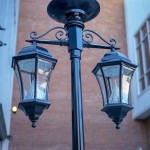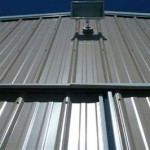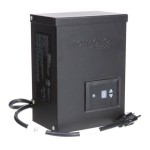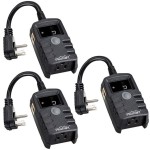Can Outdoor LED Lights Be Used Inside?
The question of whether outdoor LED lights can safely and effectively be used indoors is a common one, driven by a desire for versatility and cost savings. While technically possible in many instances, the decision to utilize outdoor-rated LED lighting inside requires careful consideration of several factors, including design specifications, safety certifications, light output characteristics, and potential drawbacks. This article explores these considerations in detail, providing a comprehensive overview of the feasibility and appropriateness of using outdoor LED lights indoors.
LED technology, in general, has revolutionized the lighting industry due to its energy efficiency, long lifespan, and versatility. LEDs consume significantly less power than traditional incandescent or fluorescent bulbs, reducing electricity bills and minimizing environmental impact. They also offer a wider range of color temperatures and brightness levels, allowing for greater customization in lighting design. However, outdoor LED lights are specifically engineered to withstand harsh environmental conditions, which may result in certain features that are not necessary or even desirable for indoor applications.
Understanding the Differences Between Indoor and Outdoor LED Lights
A key distinction between indoor and outdoor LED lights lies in their construction and certifications. Outdoor lights are built to endure exposure to rain, snow, sunlight, and temperature fluctuations. They often possess robust housings to prevent water ingress, corrosion-resistant materials, and protective coatings to mitigate UV damage. These features contribute to a higher ingress protection (IP) rating, indicating the level of protection against solid objects (like dust) and liquids.
Indoor LED lights, on the other hand, typically have a simpler design and lower IP rating. They are not designed to withstand the same level of environmental stress as outdoor fixtures. While indoor lights are often more aesthetically pleasing and come in a wider array of designs, their construction may not be as durable or resistant to moisture. This difference in construction is reflected in the regulatory standards and certifications that apply to each type of lighting.
One of the most important certifications to consider is the Underwriters Laboratories (UL) listing. UL certification indicates that a product has been tested and meets specific safety standards. Outdoor LED lights often carry a UL listing specific to wet or damp locations, signifying their ability to operate safely in these environments. Indoor lights will typically have a UL listing appropriate for dry locations. While using a wet-rated light in a dry indoor location poses minimal safety risk from an electrical standpoint, the over-engineered design may be unnecessary and contribute to a higher initial cost.
Another relevant standard to consider is the RoHS (Restriction of Hazardous Substances) directive, which restricts the use of certain hazardous materials in electrical and electronic equipment. Both indoor and outdoor LED lights are typically RoHS compliant, but it is always advisable to verify this compliance to ensure the product is safe for use in any environment.
Factors to Consider Before Using Outdoor LED Lights Indoors
Several factors should be carefully evaluated before deciding to use outdoor LED lights indoors. While the technical aspects may permit their use, other considerations, such as aesthetics, light quality, and cost, can play a significant role in the decision-making process.
Firstly, the aesthetic appeal of outdoor lights may not be suitable for all indoor environments. Outdoor fixtures often prioritize functionality and durability over sleek design, which can result in a less visually appealing appearance compared to indoor-specific lights. Consider the overall style and décor of the room and whether the rugged appearance of an outdoor light would complement or detract from the aesthetic.
Secondly, light output and color temperature are crucial considerations. Outdoor lights are often designed to provide bright illumination for large areas, potentially resulting in excessive brightness or glare when used indoors. The color temperature, measured in Kelvin (K), affects the perceived warmth or coolness of the light. Outdoor lights might favor cooler color temperatures (e.g., 5000K or higher) to mimic daylight, which may not be ideal for creating a cozy and inviting indoor atmosphere. Indoor lighting often benefits from warmer color temperatures (e.g., 2700K to 3000K) to create a more relaxed and comfortable ambiance. It is important to check the lumen output and color temperature specifications of the outdoor LED lights and compare them to the desired lighting characteristics for the indoor space.
Thirdly, the size and form factor of outdoor lights may not be practical for indoor use. Outdoor fixtures are often larger and bulkier than their indoor counterparts, potentially taking up excessive space or creating an awkward appearance. Consider the available space and the intended purpose of the lighting when evaluating the suitability of outdoor LED lights for indoor use.
Fourthly, the cost of outdoor LED lights can be a factor. While LEDs are generally energy-efficient, outdoor-rated fixtures often carry a higher price tag due to their more robust construction and advanced features. Evaluate whether the added cost of using outdoor lights indoors is justified by any specific benefits they offer, such as increased durability or water resistance in specific indoor areas like bathrooms or kitchens.
Finally, consider the specific application and environment within the indoor space. For example, using a wet-rated outdoor LED light in a bathroom shower is acceptable and potentially advantageous due to its moisture resistance. However, using the same light in a living room might be aesthetically unappealing and unnecessarily expensive.
Potential Benefits of Using Outdoor LED Lights Indoors
Despite the considerations mentioned above, there are situations where using outdoor LED lights indoors can offer distinct advantages. These benefits primarily relate to increased durability, moisture resistance, and versatility in specific environments.
Durability is a significant benefit of outdoor-rated LEDs. If the indoor environment is prone to impacts or rough handling, the rugged construction of outdoor lights can provide added protection and extend the lifespan of the fixture. This is particularly relevant in areas such as garages, workshops, or playrooms where the risk of damage is higher.
Moisture resistance is another key advantage. In damp or humid environments, such as bathrooms, kitchens, or basements, using outdoor-rated LED lights can help prevent corrosion and electrical hazards. The higher IP rating of outdoor fixtures ensures that they are protected from water ingress, making them a safer and more reliable option in these areas.
Versatility is enhanced when utilizing outdoor LED lights indoors. Some outdoor fixtures are designed with adjustable features, such as dimming capabilities or adjustable beam angles, that can be beneficial in certain indoor applications. For example, an outdoor floodlight with adjustable brightness could be used in a studio or workspace where variable lighting levels are required. Similarly, an outdoor spotlight with an adjustable beam angle could be used to highlight artwork or architectural features indoors.
Furthermore, some outdoor LED string lights or fairy lights are increasingly popular for indoor decorative lighting. These lights are often designed with weatherproof features, making them suitable for use in a variety of indoor settings, including bedrooms, living rooms, and patios. They can add a whimsical and festive touch to the décor, while also providing energy-efficient illumination.
However, it is crucial to emphasize that any indoor use of outdoor LED lights should always prioritize safety and compliance with applicable electrical codes and regulations. Ensure that the fixtures are properly installed and grounded and that all connections are secure and protected from moisture. Consult with a qualified electrician if you have any doubts or concerns about the safety of using outdoor LED lights indoors.
While outdoor LED lights can be used indoors under certain circumstances, a careful evaluation of the factors outlined above is crucial to ensure that the chosen lighting solution is safe, aesthetically appropriate, and functionally effective. Weighing the potential benefits against the drawbacks will enable a well-informed decision that aligns with the specific needs and preferences of the intended indoor environment.

Can Led Lights Be Used Outdoors Bpm Electric

120v Led Light Strips Long Run For Indoors And Out Ledsupply Blog

Why You Can T Use Certain Led Bulbs In Enclosed Fixtures 1000bulbs Blog

Led Flood Lights What You Need To Know

Interior Led Lights For Stairs Kit Recessed Indoor Stair Lighting

Eti 11 In Octagon White Indoor Outdoor Ceiling Led Light 3 Color Temperature Options Wet Rated 830 Lumens Front Side Porch 54466201 The Home Depot

The Best Led Light Strips In 2024 Cnn Underscored

Better Homes Gardens 120 Volt 36 Watt 16 Foot Color Changing Led Outdoor Strip Light Com

Choose The Best Color Temperature For Your Outdoor Lighting Knowledge Base Super Bright Leds

Elvi Recessed Outdoor Led Step Wall Light Home
Related Posts







